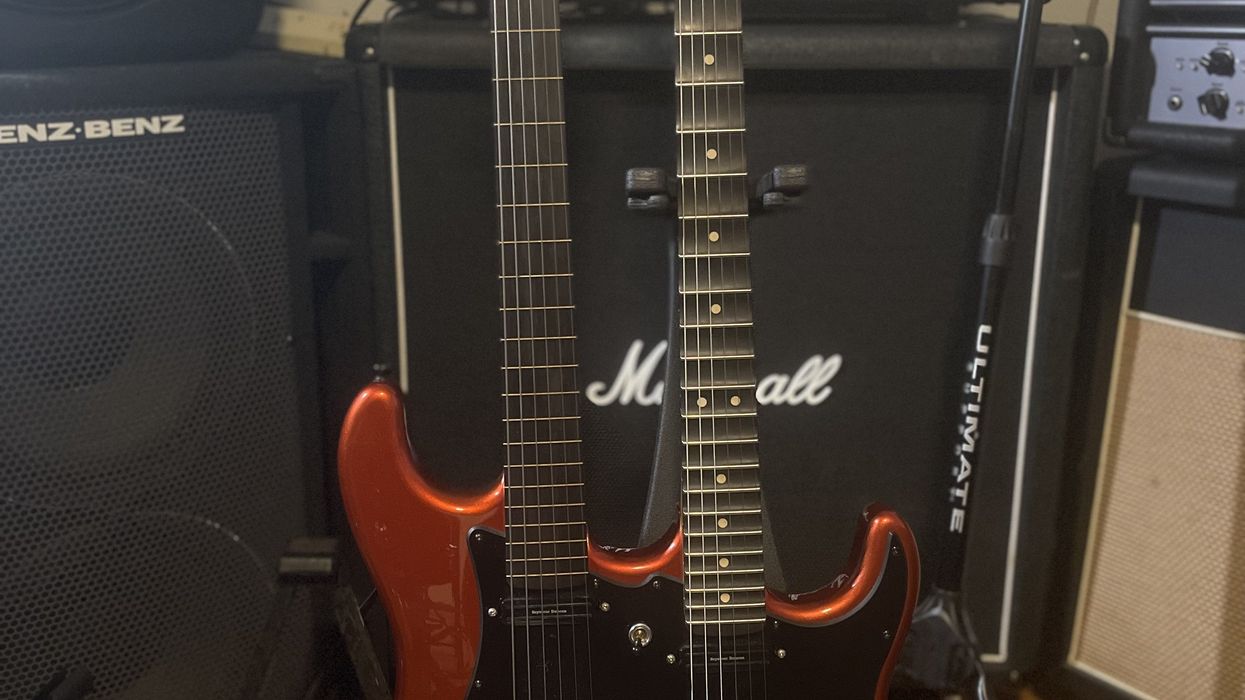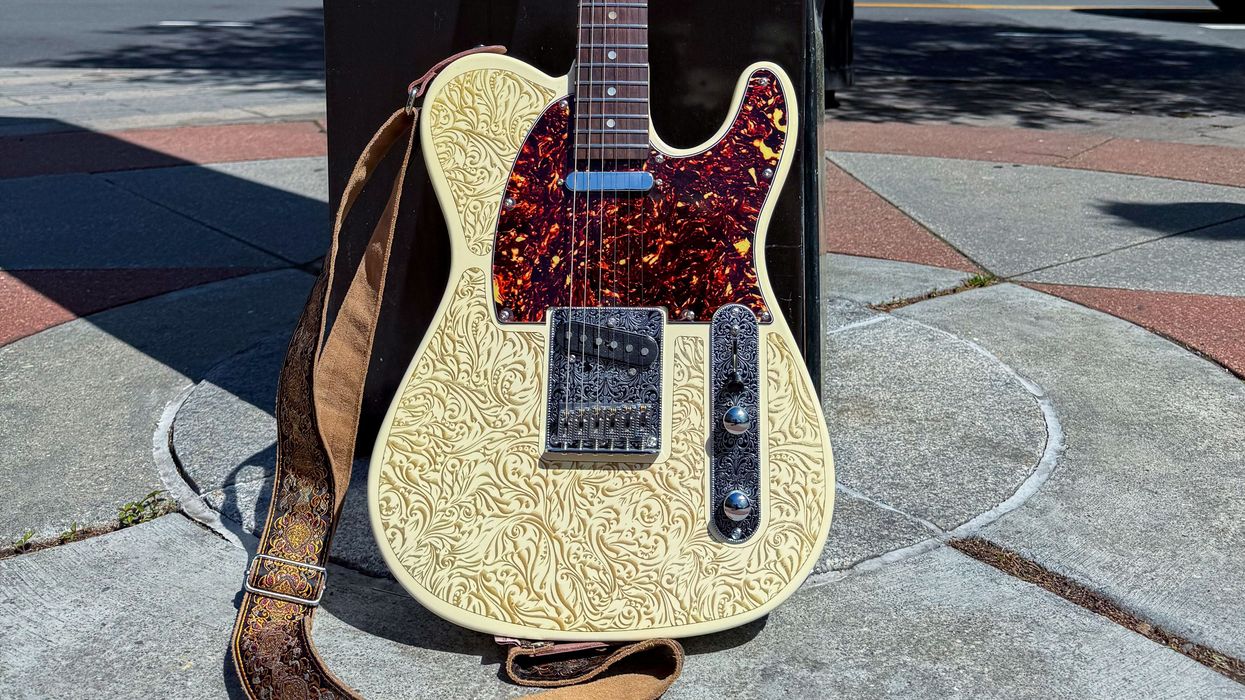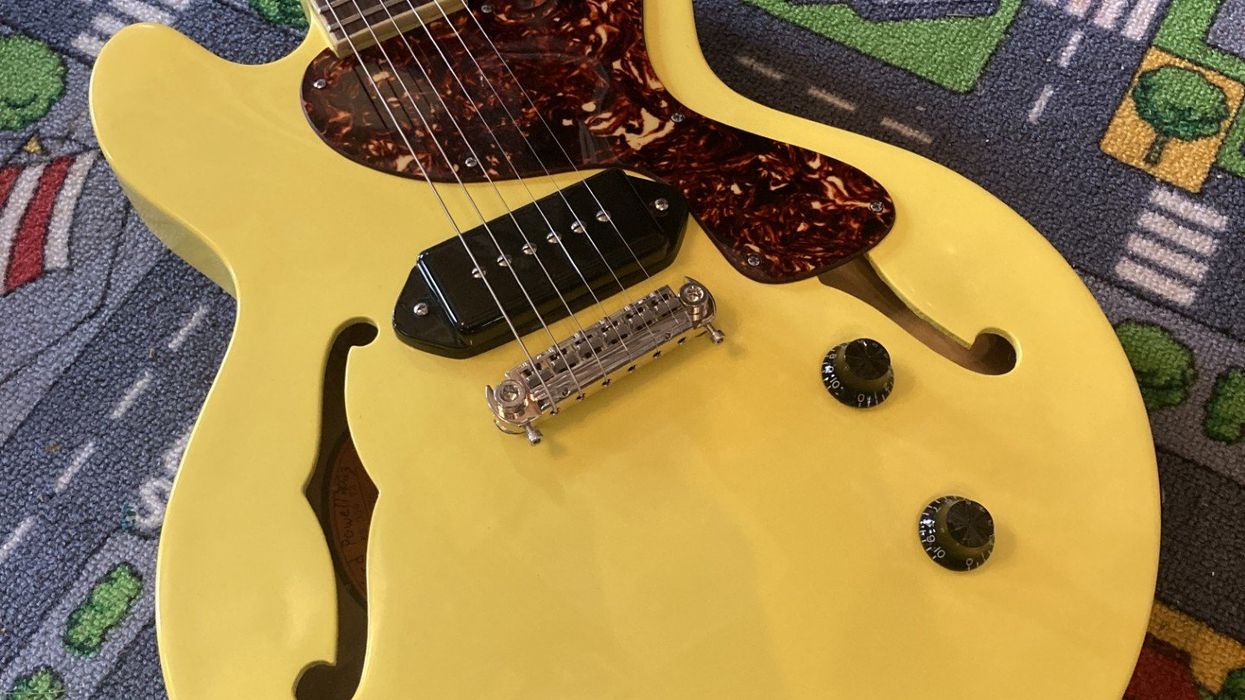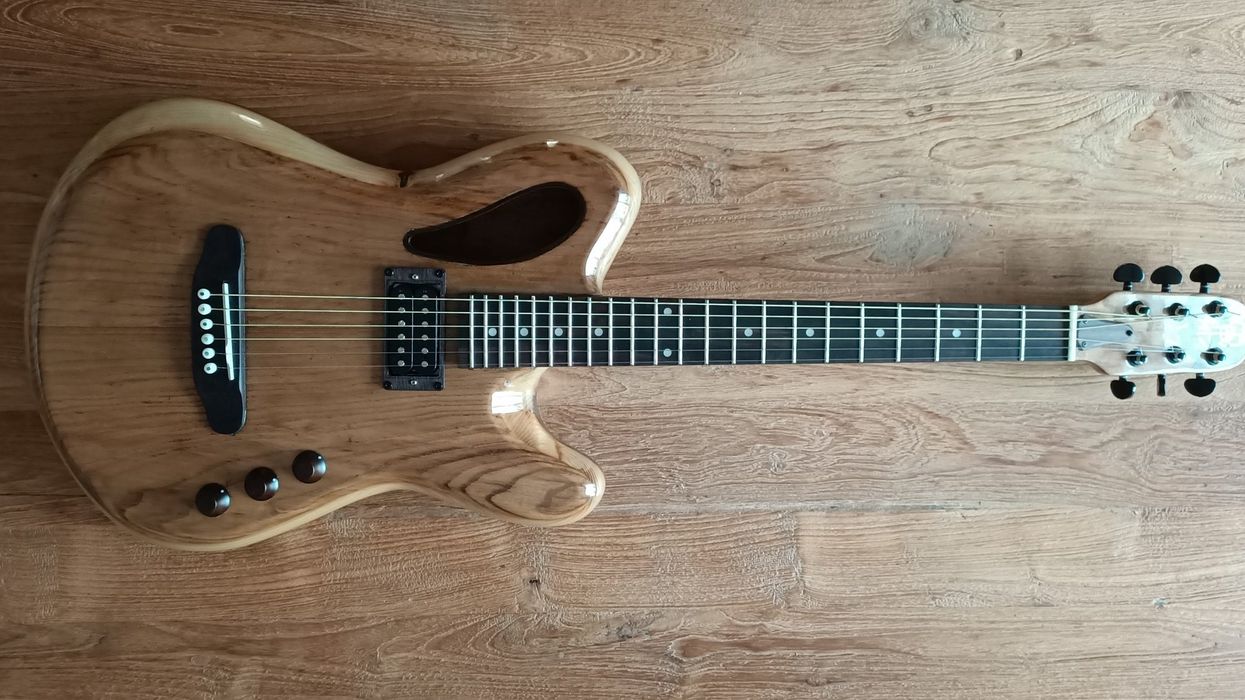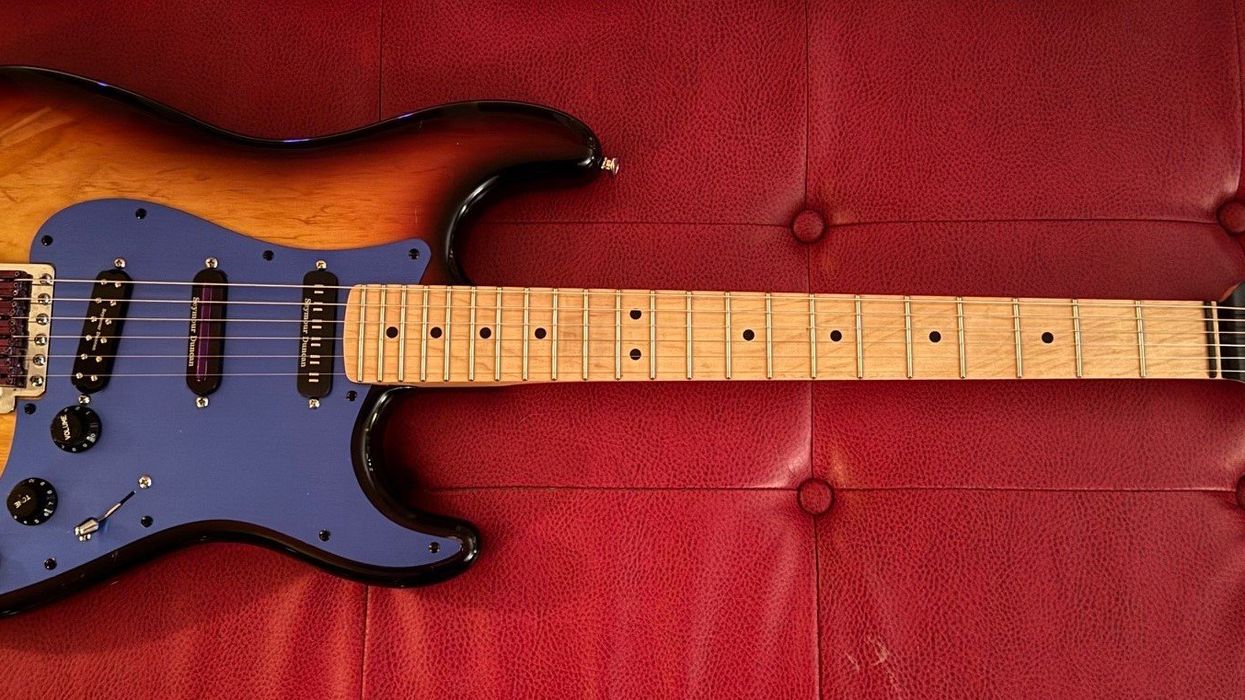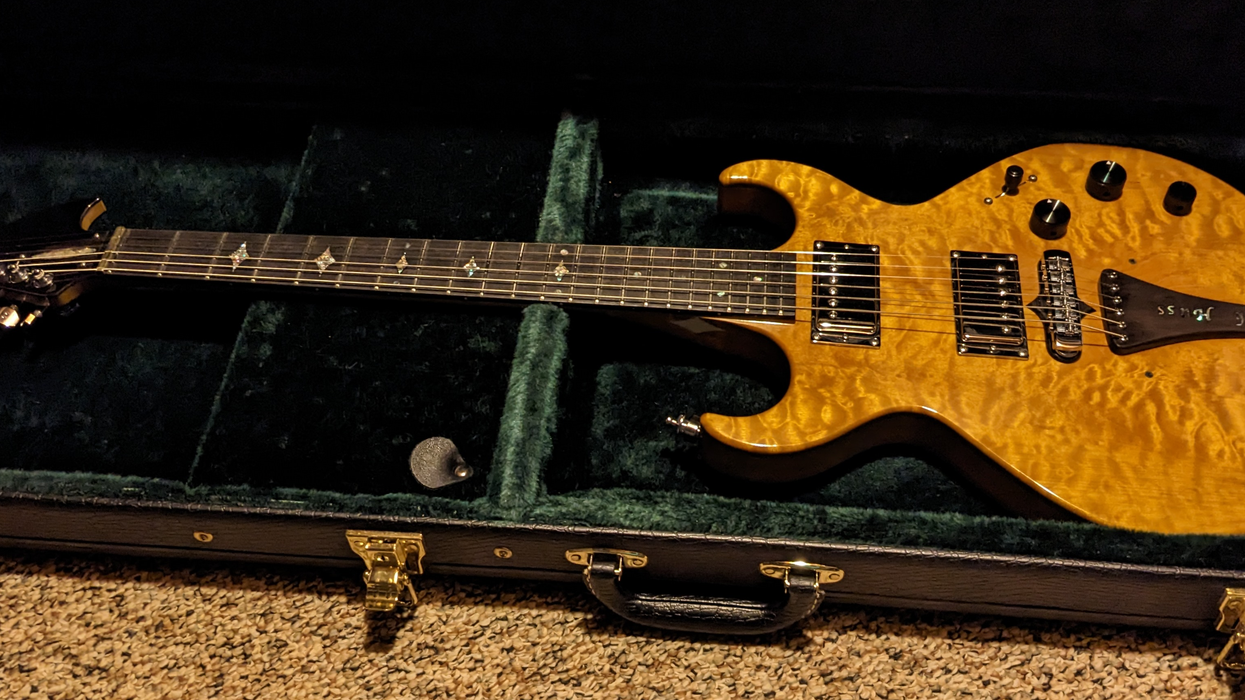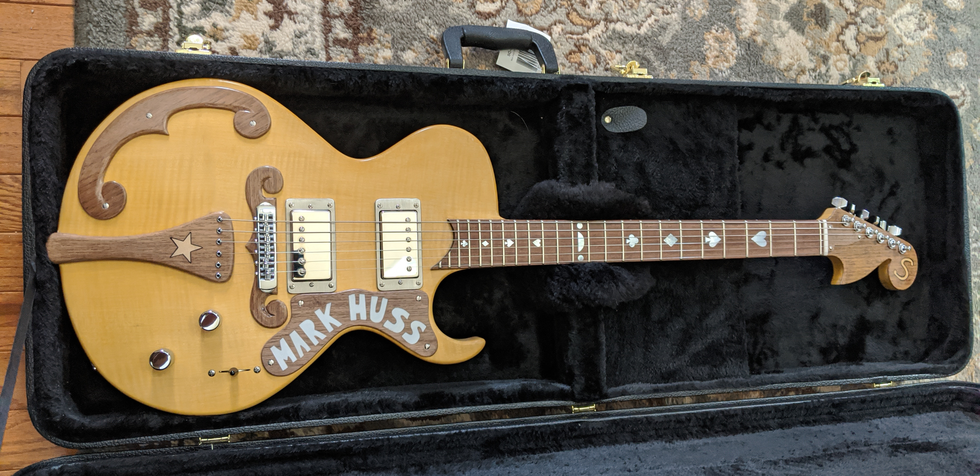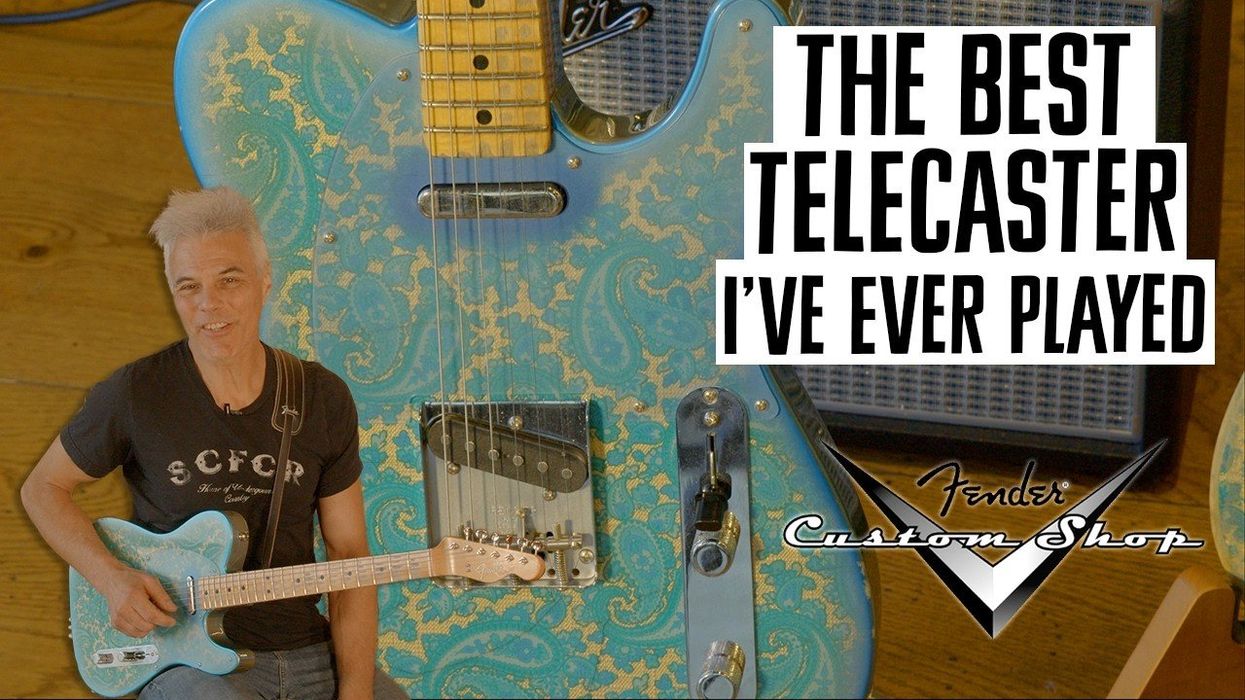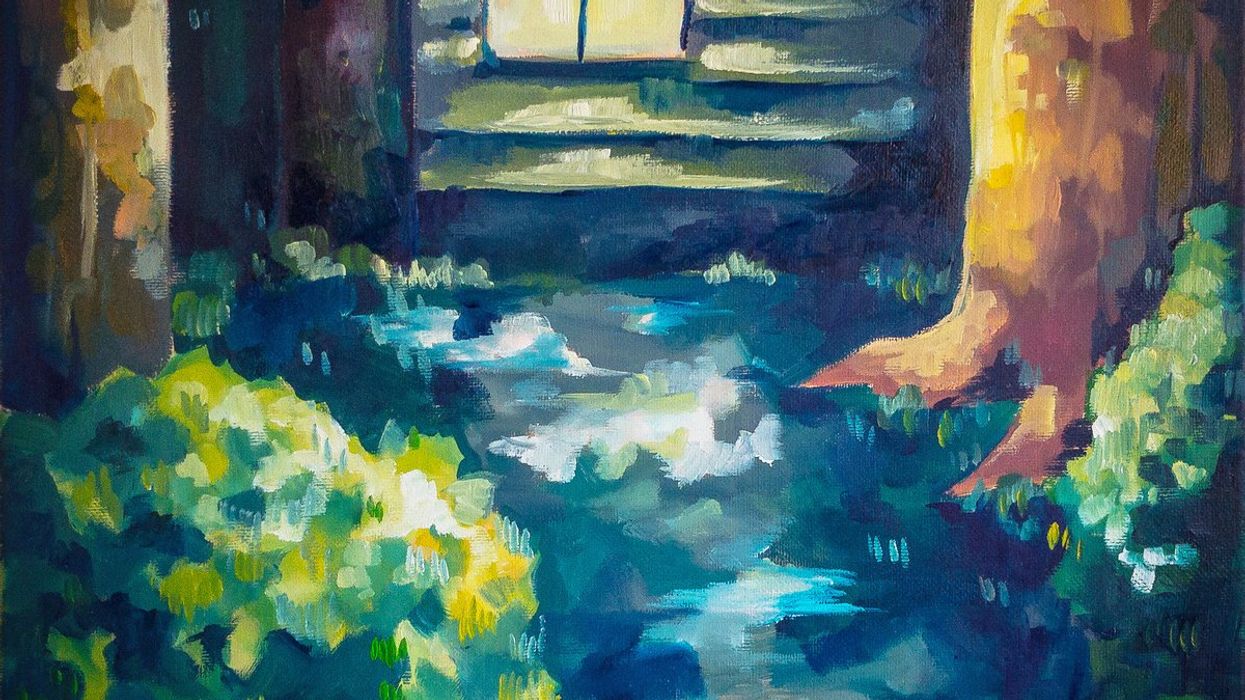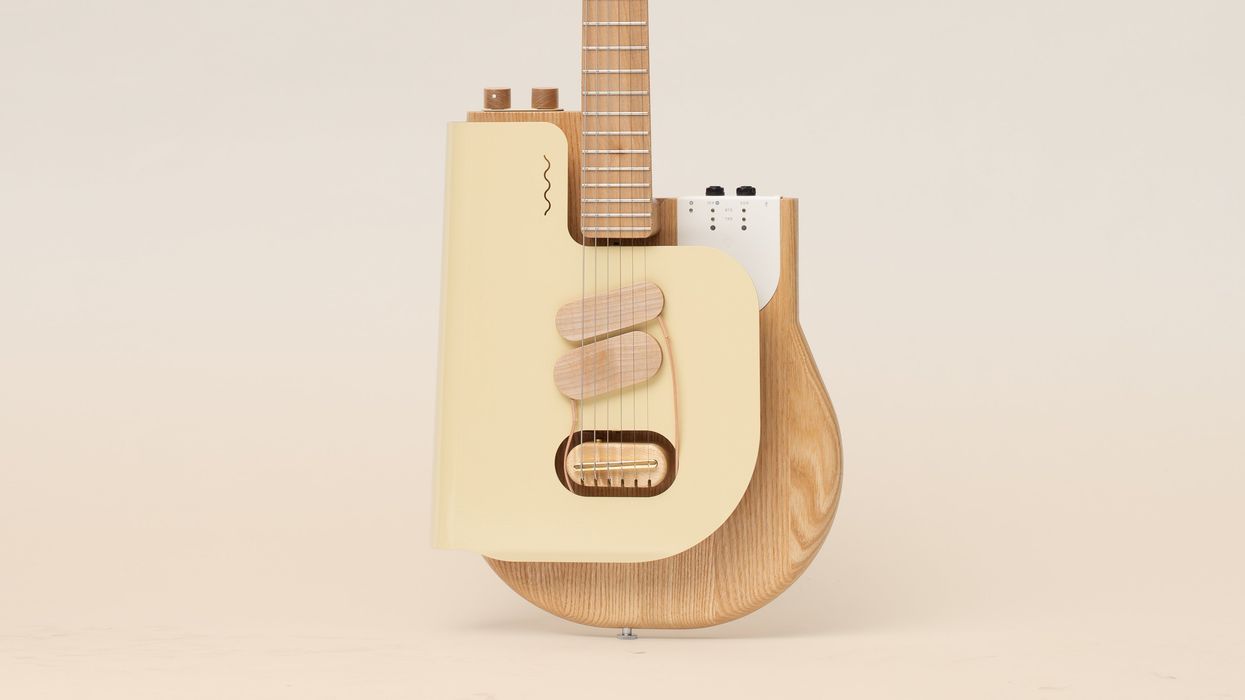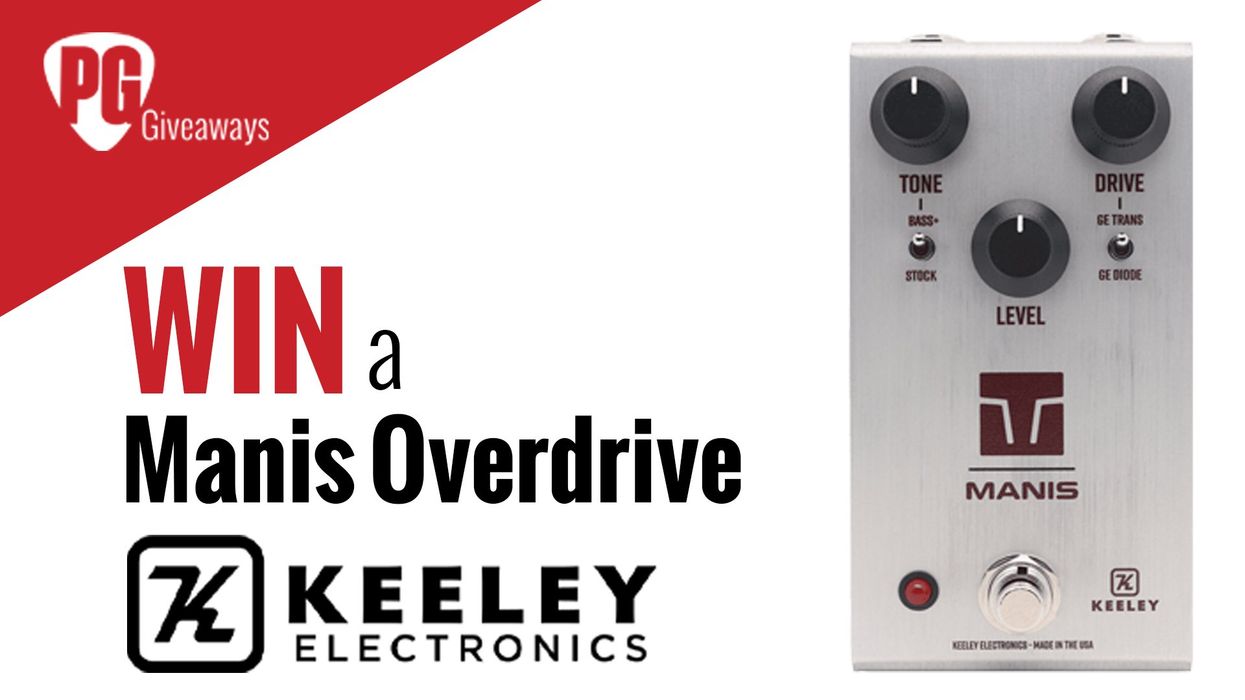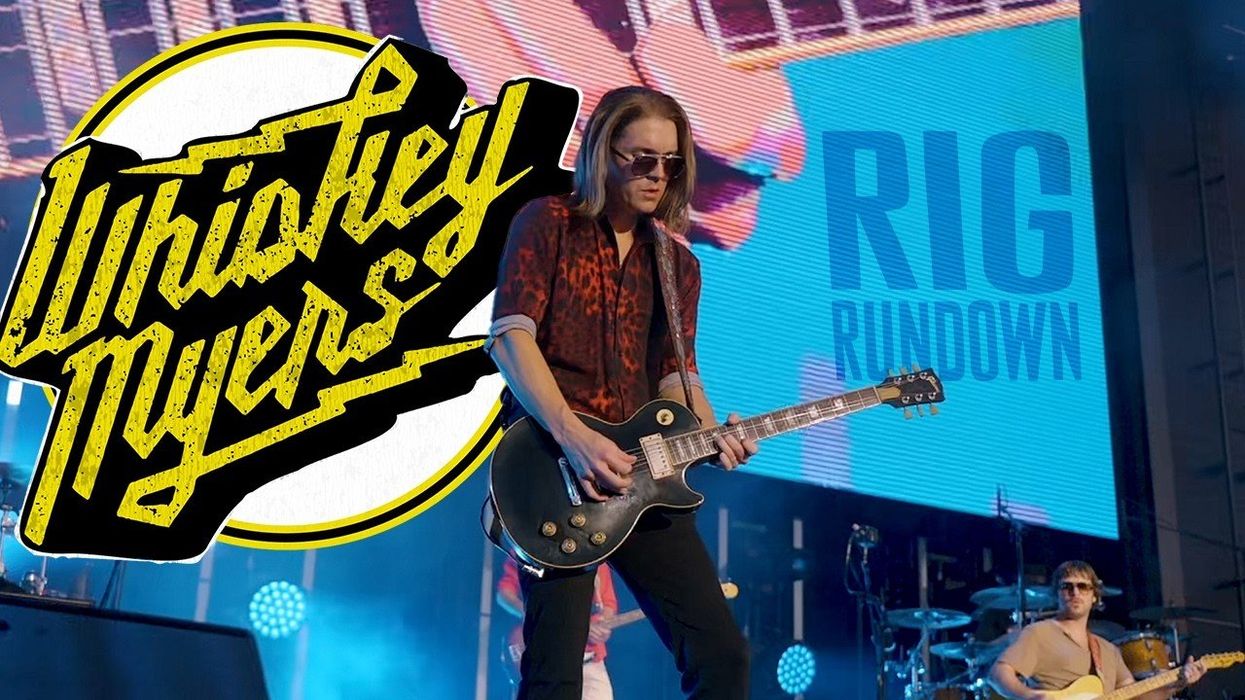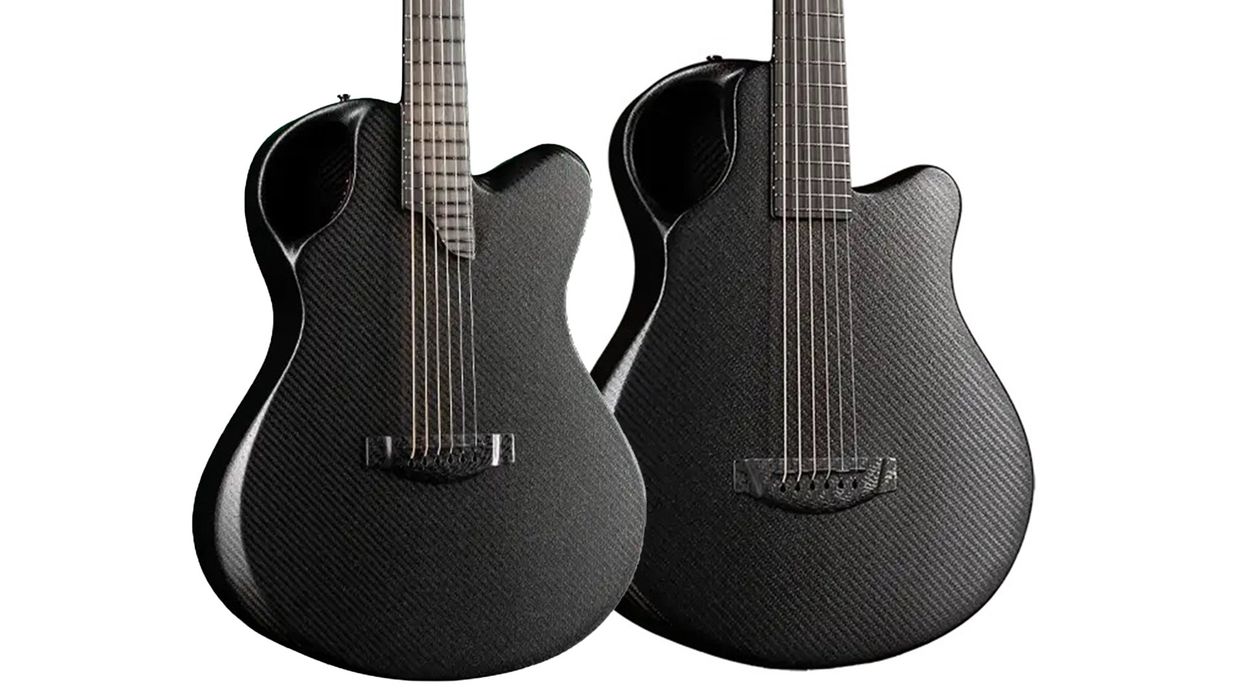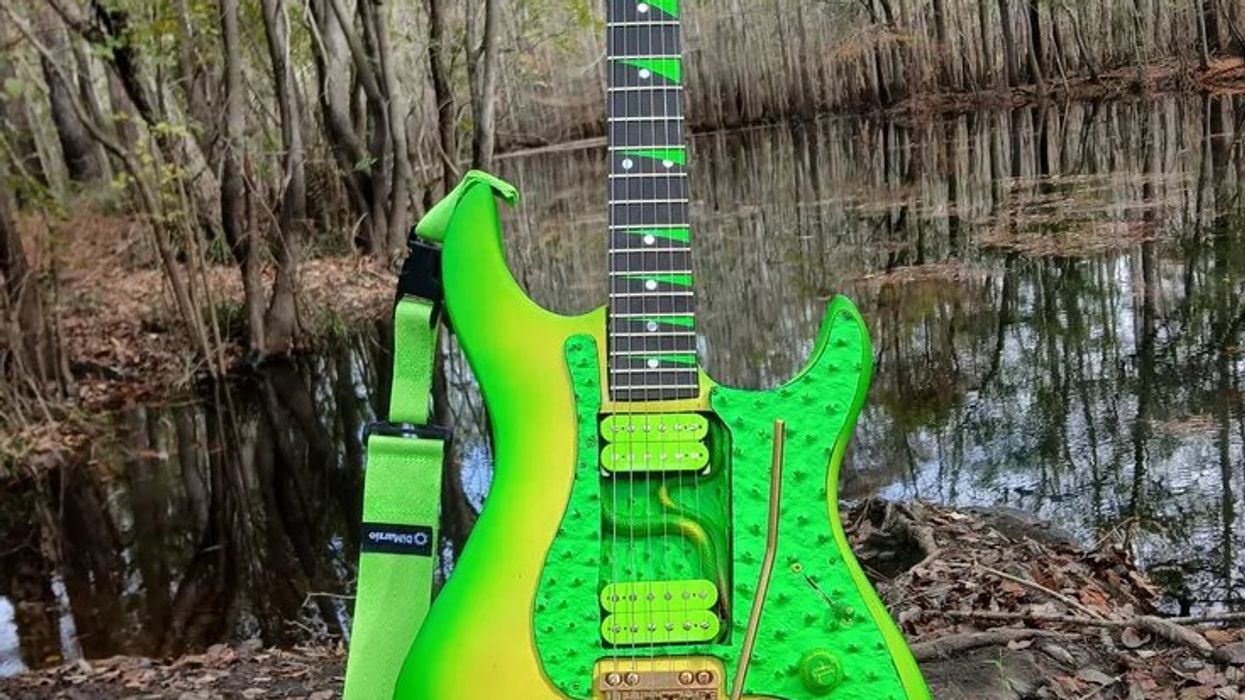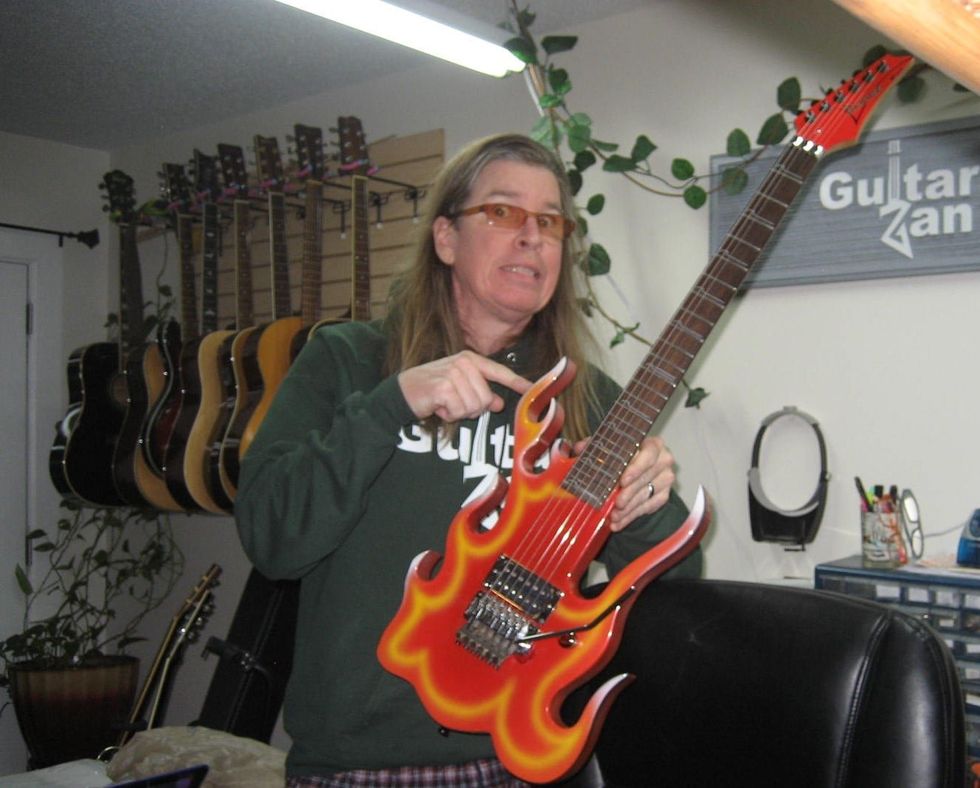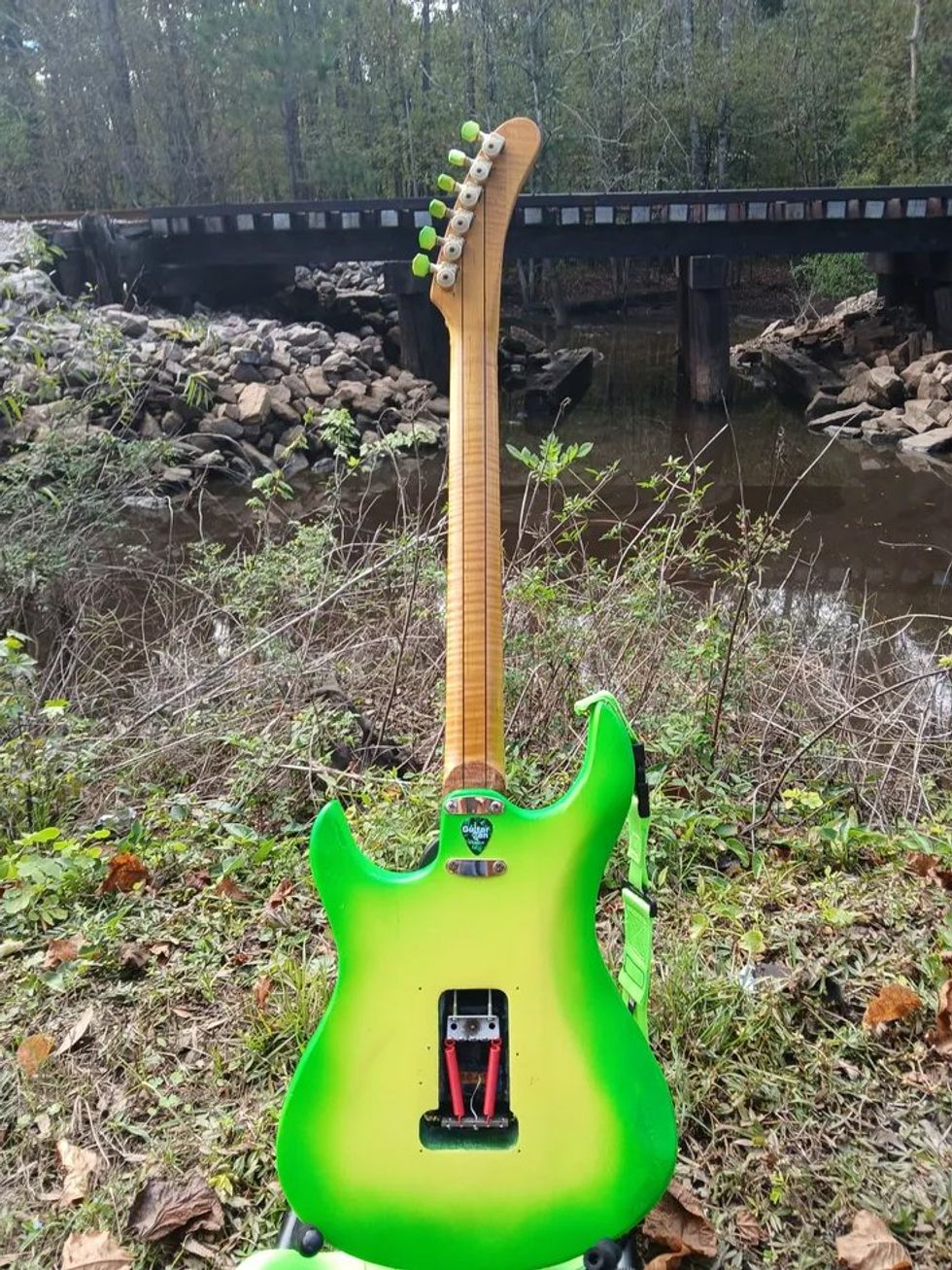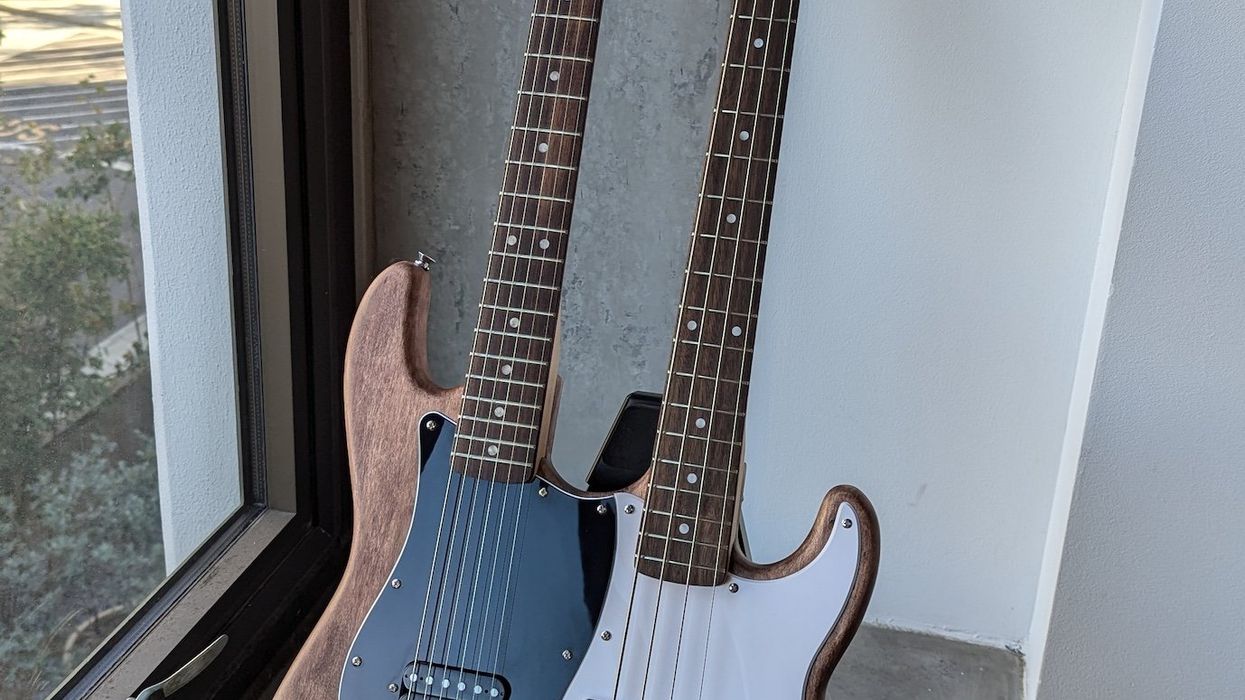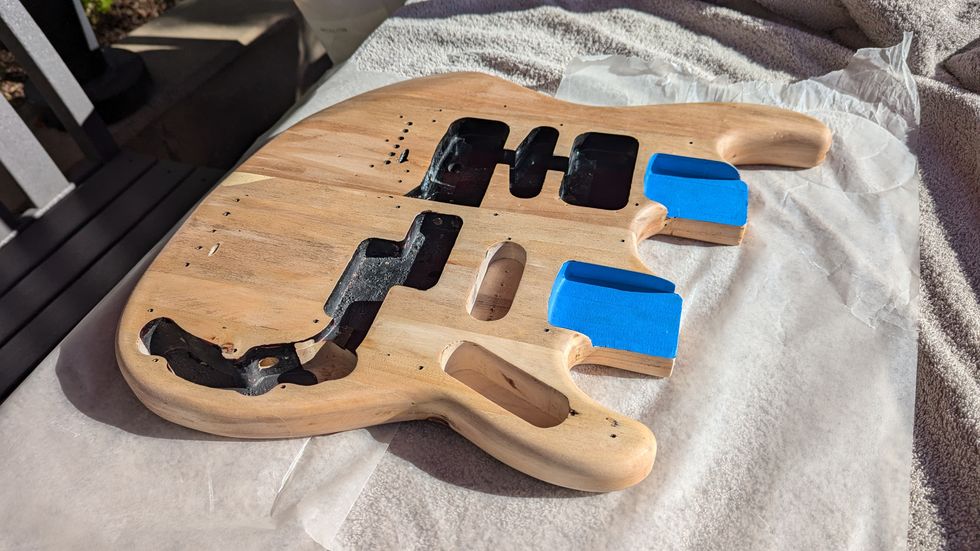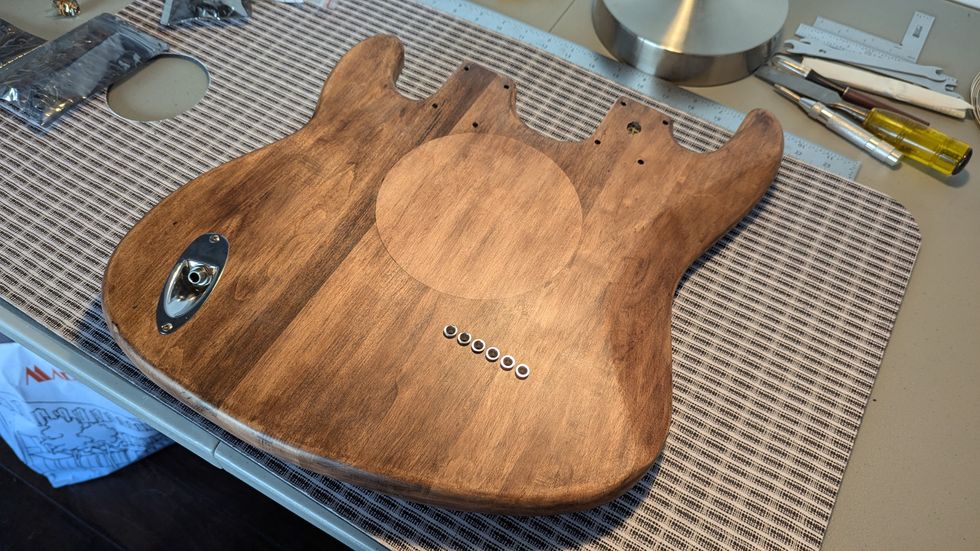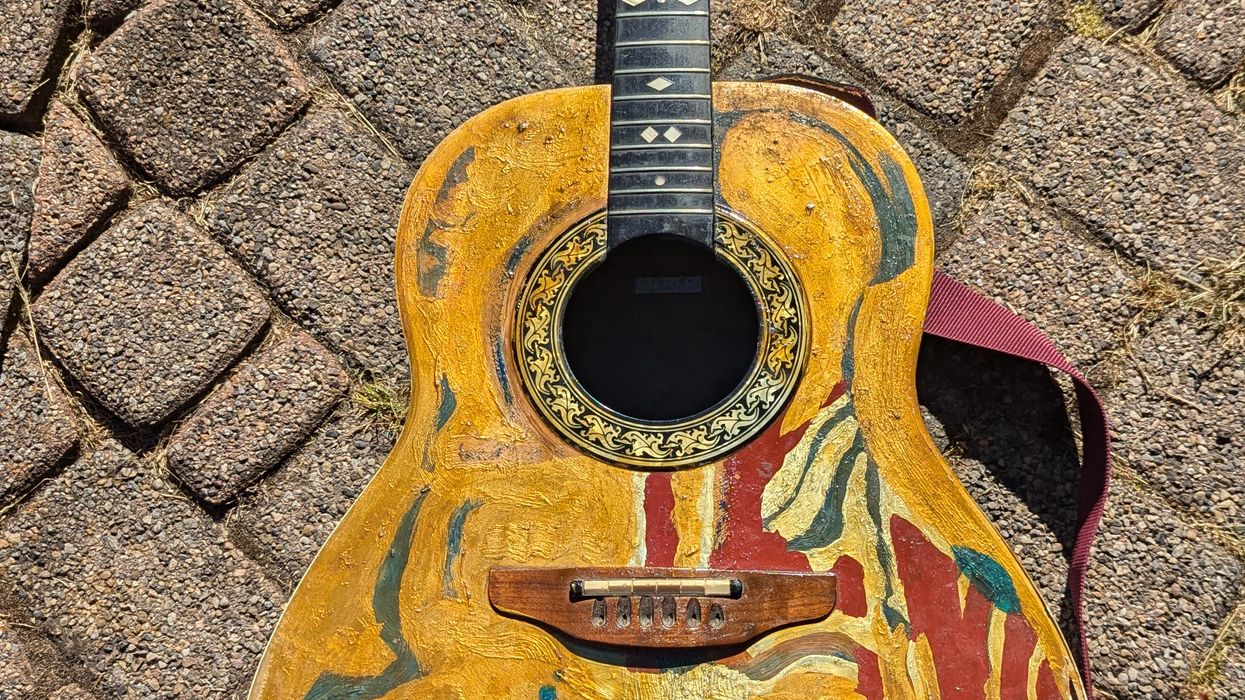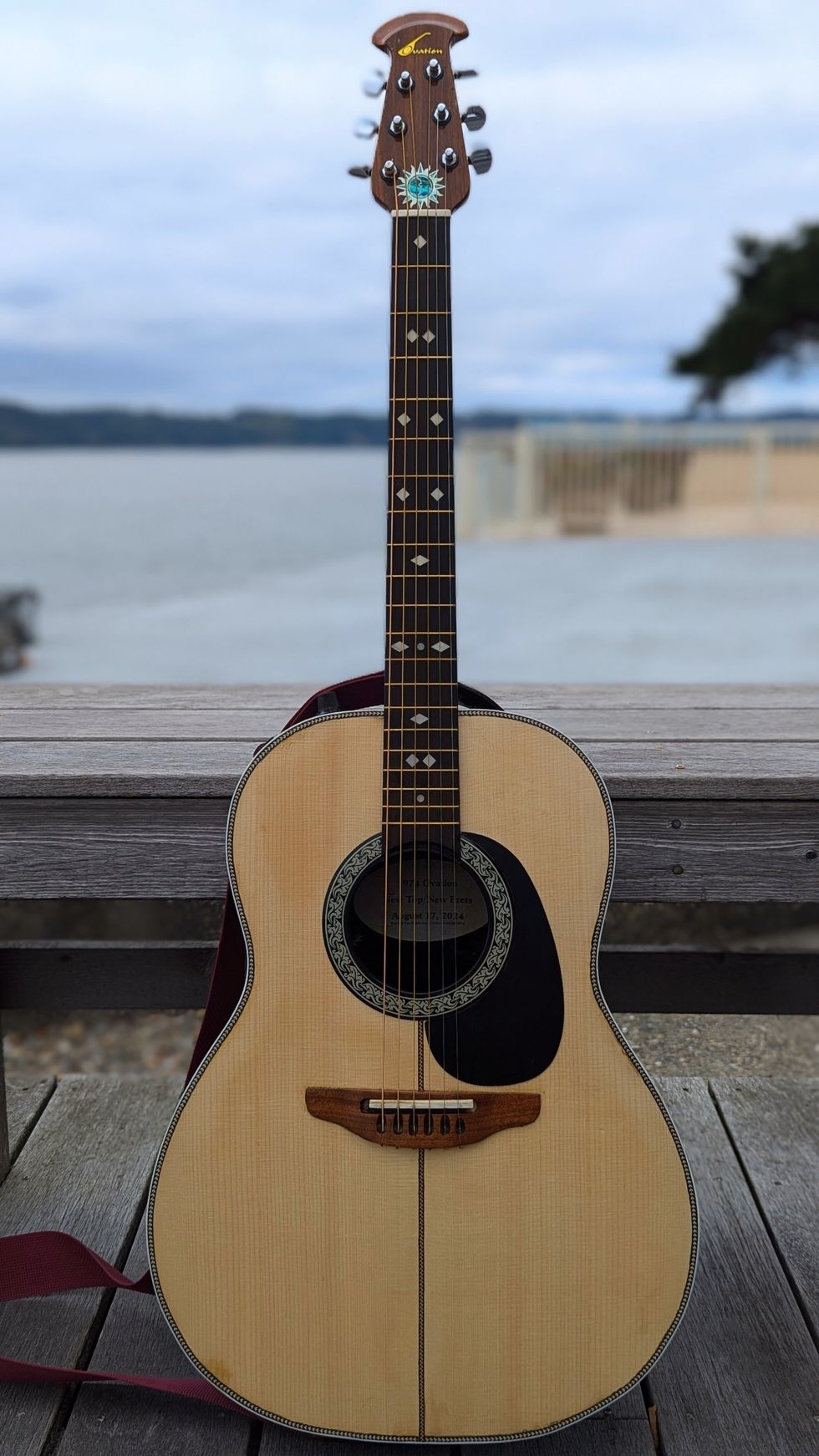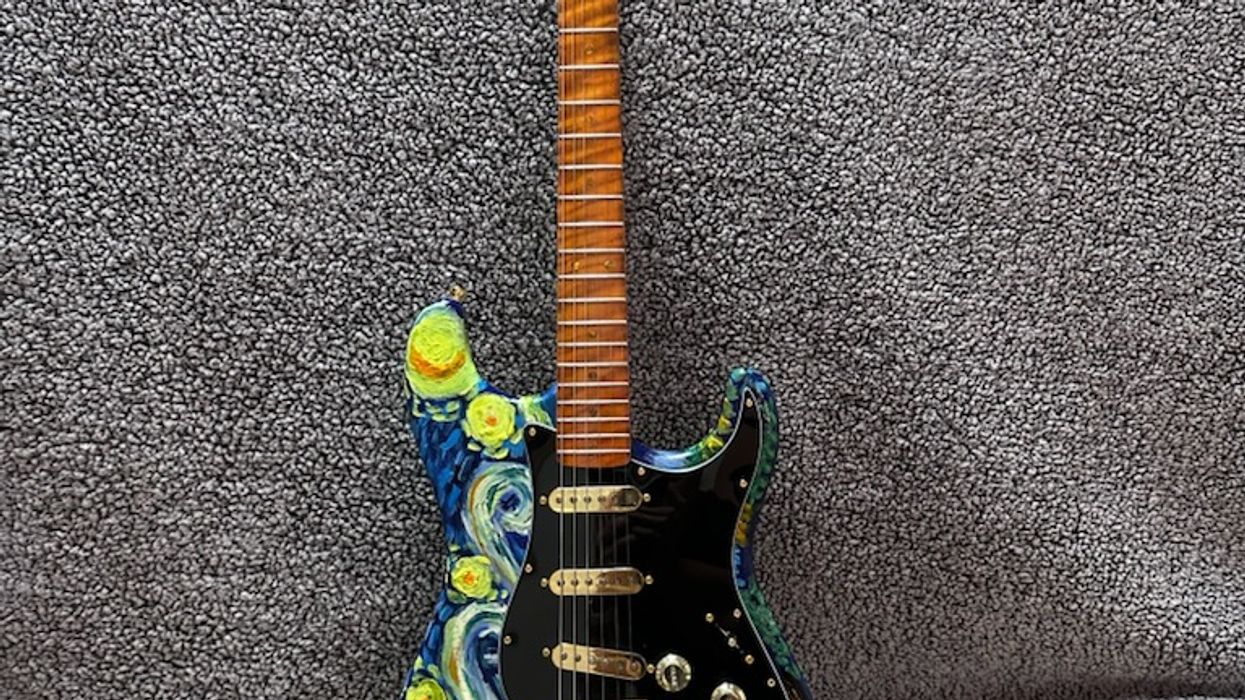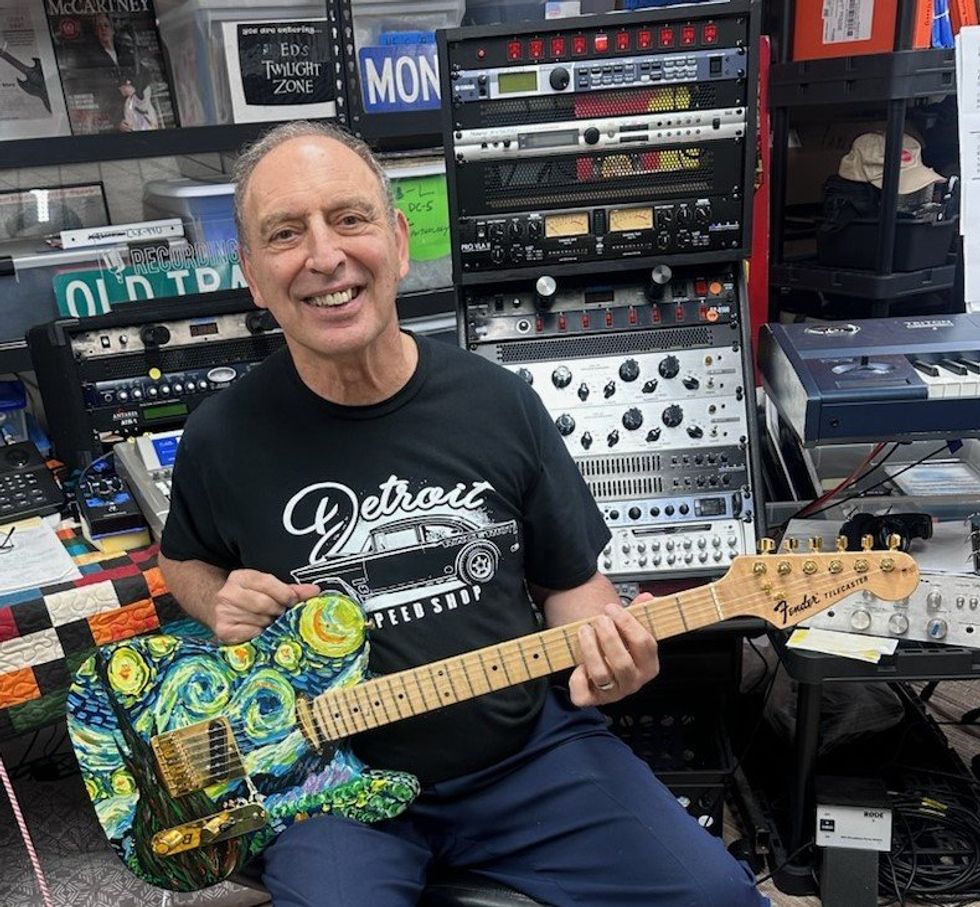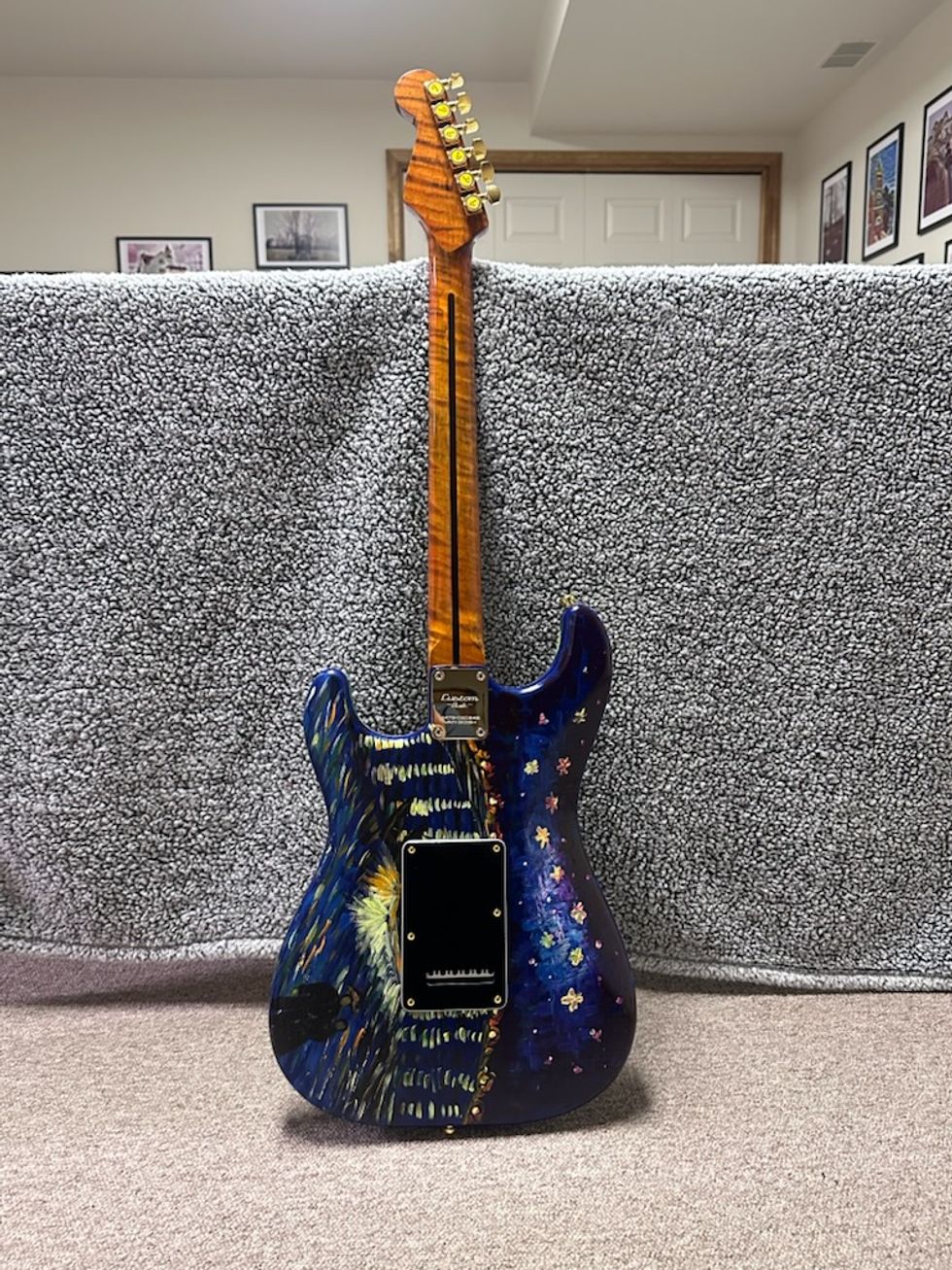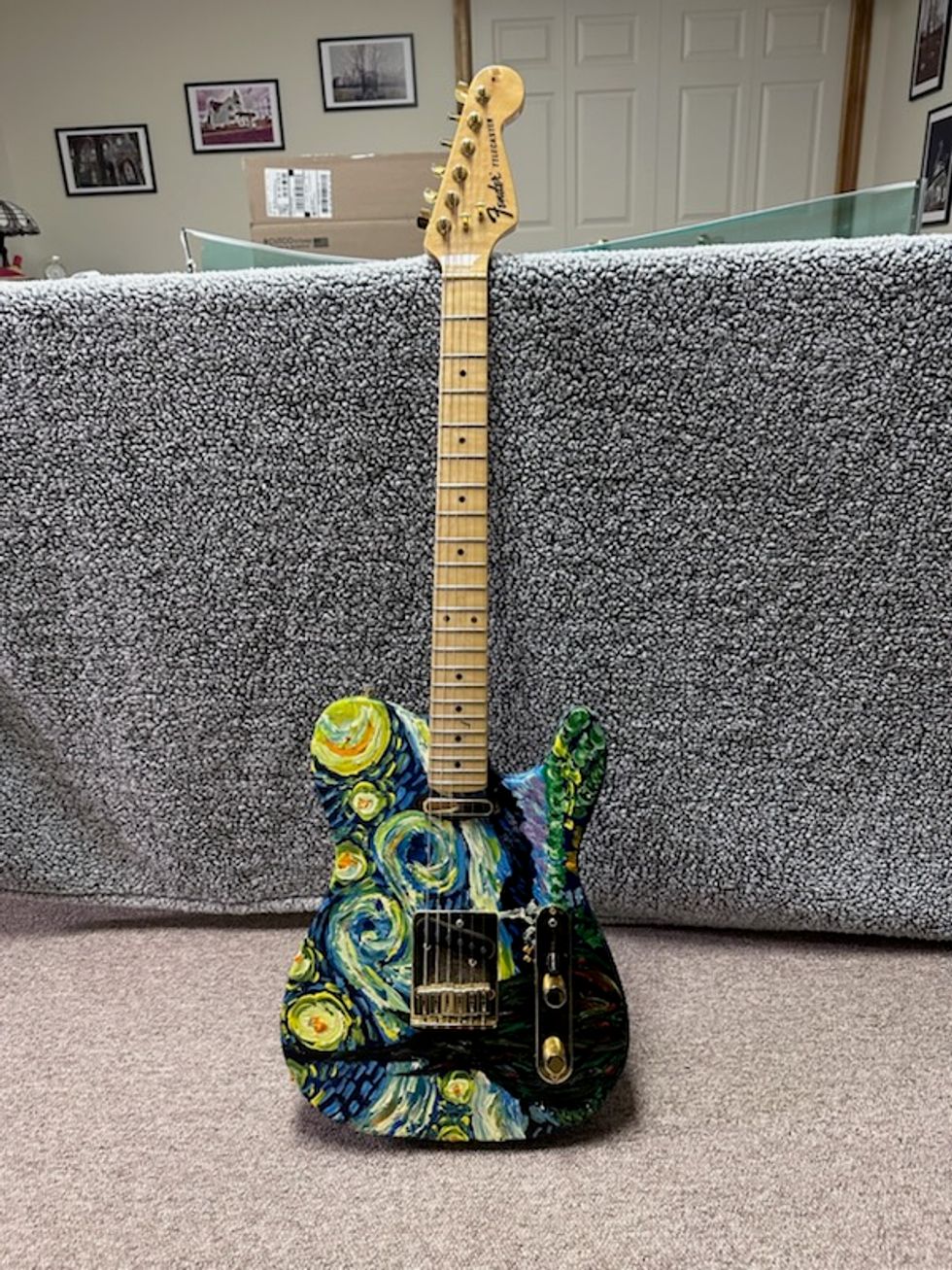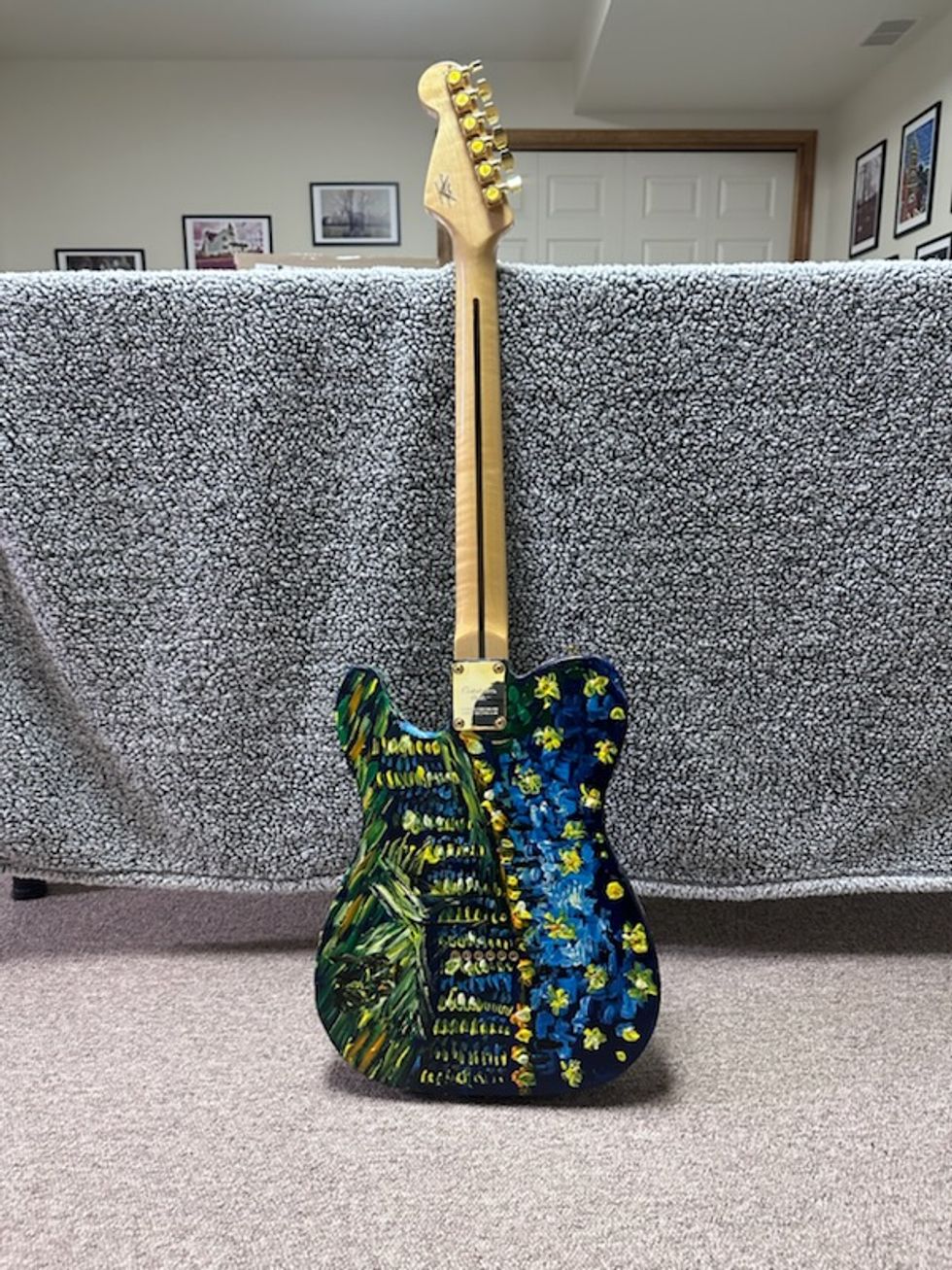This reader’s doubleneck guitar sports one rather unusual feature—a fretless neck.
I’m always looking for things that push my guitar playing in new directions and challenge me, whether it’s new music, rediscovering old music, or new gear. Though I’ve played fretless bass for years, I’ve always wanted a fretless guitar. Yet, the fear of being on stage without the safety net of a fretted guitar, coupled with the inspiration of Ron “Bumblefoot” Thal, pointed me towards a doubleneck. I put this guitar together with Warmoth parts, since a comparable Kiesel headless doubleneck was out of my price range.
I started with an alder body, finished in cinder red gloss by Warmoth. The fretless neck has maple fret lines on a black ebony fretboard, on a roasted maple neck. The fretted neck has a scalloped ebony fretboard (a nod to Yngwie) on a roasted maple neck. The ebony peghead veneers came out really nice. I didn’t have the courage to do a lineless fretboard on the fretless side, though it would have made the fretless side more obvious. Most people roll their eyes when they think there are just two fretted necks.
The pickups are Seymour Duncan Hot Rails in the neck, and Jupiter Rails in the bridge. In between the necks, there’s a 6-way Free-Way Switch. It operates like a 3-way toggle, but in the up position, it selects the fretless side, and the down position selects the fretted side. Despite the electronics separation, I still need fret wraps, because the sympathetic vibrating of each neck can be heard through the other neck’s pickups. They’re easy enough to slide on and off.
This guitar also has LSR roller nuts. Combined with the Gotoh locking tuners, tuning is pretty solid. I love the LSR nut, though you gotta be careful when changing strings because the little ball bearings fall out if you’re not careful.
“Most people roll their eyes when they think there are just two fretted necks.”
The fretless side is strung with D’Addario flats. I prefer .011s, though I know some fretless users go for heavier gauges. I’m considering having the fretless board epoxied, though the flatwounds don’t really chew up the fretboard. Anyway, I can always just replace the neck in the future if it gets chewed up. The fretted side has .009s, and I don’t have a problem with pushing them out of tune on the scalloped board.
One thing I learned, while I ordered the vintage spacing hardtail on the fretless side, is that it’s virtually impossible to find vintage-spacing bridges in black. But I managed to cobble together some bridges to make it work.
Lastly, I had a battery cavity installed in the back, though I knew that I wouldn’t use active electronics. I figured it would lighten this heavy guitar, even if just by a few ounces. Still, it “only” weighs 13 pounds.
I’m really surprised that various techniques work well on the fretless side—conventional picking, sweeps, and tapping. I had initially wanted a sustainer in the neck position of the fretless side, but that would have complicated the wiring beyond my meager abilities. Fortunately, I don’t need it. Sustain is not too much of a problem—maybe more so on the higher frets of the plain strings, but that’s nothing that some tremolo picking can’t solve. Chords are a different story, though. Hard to intonate any chords other than simple fifths. But that’s what the fretted guitar is for!
